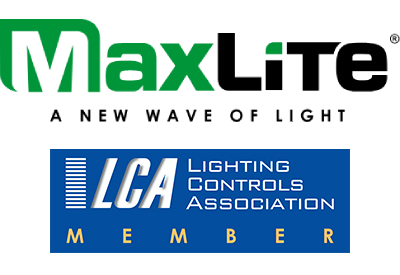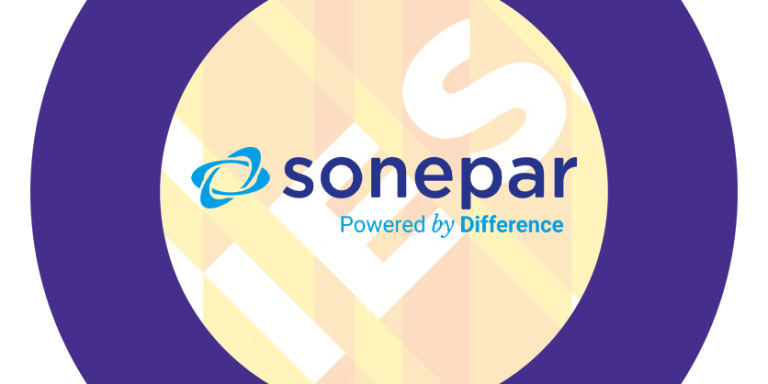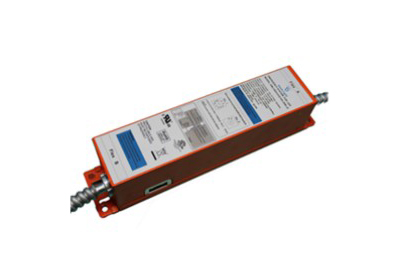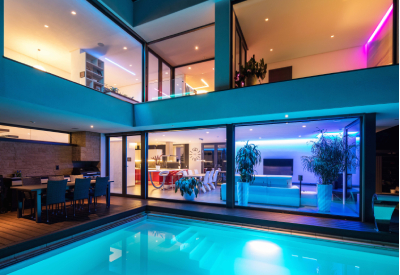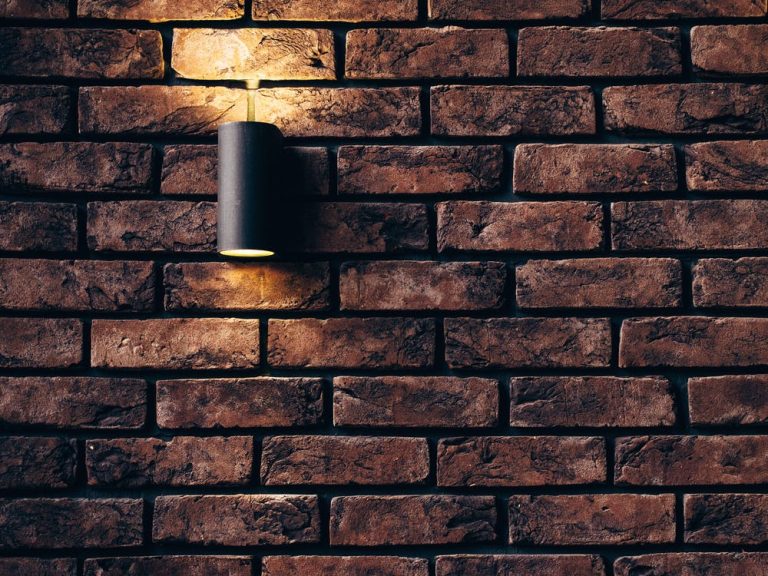The IoT and Lighting Design

August 23, 2021
The Illuminating Engineering Society (IES) recently published ANSI/IES LP-12-21, IoT Connected Lighting. This 43-page lighting practice and American National Standard provides guidance for lighting professionals to consider and evaluate connected lighting and Internet of Things (IoT) solutions and applications.
The IoT can be confusing when one tries to define it according to its full range of features and benefits, which are evolving. Instead, it is more useful to define it according to core capabilities, with realized features and benefits individualized to applications. An IoT solution networks sensors and computing devices that can be globally programmed, interoperate, cross-communicate, and generate data.
These capabilities provide a powerful tool for building owners and managers to improve operational efficiencies with benefits that go far beyond maximizing energy management. The 3/30/300 rule of thumb postulates the average cost to operate one square foot of commercial building space is $3 energy, $30 real estate, and $300 occupants. Energy-efficient lighting traditionally tackles the 3, while quality lighting addresses the 300. An IoT solution offers potential to deliver value across all three cost areas while potentially adding a fourth — $3,000 — which could be revenue, such as by creating customer-facing applications.
Major elements of an IoT solution include physical objects (e.g., sensors and controllers), data, network infrastructure (e.g., server, gateways), and software. The solution may communicate via a dedicated network (e.g., Bluetooth Mesh), building network (LAN), or Internet (WAN). Attendant issues include managing data, latency for response, cybersecurity, and interoperability/integration. (Another interpretation of the $3,000 in the 3/30/300/3000 rule is risk of ransomware, etc. for a poorly secured system.) The solution may express through a dedicated system, building system such as lighting, or across an integrated building automation system. Analytics applications may be inherent in the system software or created via third-party apps using APIs.
The building lighting system is a strong candidate for IoT implementation for several reasons. Luminaires offer aesthetically accepted hardware/real estate for integrated devices, connection to power, distribution throughout occupied spaces, and typical location at the ceiling plane, which provides overhead coverage and lower likelihood of tampering. All luminaires can operate with lighting controls, with luminaire-level lighting controls embedding occupancy and daylight sensors and intelligent controllers directly into the luminaire. By connecting these control points within a global network, the rudiments of an IoT solution are gained.
IoT Connected Lighting defines potential use cases, including space utilization, indoor positioning/tracking, personal control, energy optimization, voice input, and Li-Fi in eight project types ranging from office buildings to smart cities. As these use cases develop, they have the potential to become standardized building blocks upon which more complex applications can be pioneered.
IoT Connected Lighting is a concise, well thought out document and an excellent guidepost for the current state of the art, a foundational knowledge base upon which lighting professionals can build on their own as technology and applications progress. One area bears special attention, which is implications for lighting design. The IoT is really just a toolbox for various applications. Where it becomes reality is in implementation by lighting and building professionals who work with a set of requirements, some of which will be familiar and some of which may not.
The first step is to understand that IoT connected lighting solution projects are more intensive than typical room-based connected control solutions, with an attendant premium in terms of cost and designer involvement. Regardless of their role in formulating the IoT solution, the lighting professional should take care to be involved as early in the design process as possible to ensure connectivity does not impose a trade-off in lighting quality. As the lighting professional produces the written narrative for the lighting and control system, at a minimum, they must represent this system in the planning for an IoT solution and provide whatever deliverables are required from their purview. The document states:
“Lighting design that incorporates IoT involves more team members, diversified project goals beyond traditional lighting project criteria, and additional coordinated components. The decision-making may include collaborative development of financial analysis.”
IoT Connected Lighting identifies the stakeholders involved in an IoT connected lighting solution, some of whom are familiar and some of whom may be novel. Familiar players might include the
• building owner, who establishes the vision, must have skilled operators capable of operating and maintaining the system, and may be represented in the project by technical consultants
• architect, interior designer, and acoustic designer, who work with the owner on intended applications
• lighting designer and/or electrical engineer, who produces the lighting and control design
• commissioning agent, who validates the design satisfies owner requirements
• electrical contractor, responsible for installation
• manufacturer and its sales and technical representatives
More novel players might include a
• smart building program manager, an owner representative responsible for implementing global smart building initiatives
• systems integrator, who integrates or one more building systems
• master systems integrator, responsible for integrating all building systems into one global platform
• building IT team, responsible for maintaining networks and cybersecurity
• low-voltage contractor, responsible for installation
The relative role and influence of each of these players may differ based on the type of project and its IoT goals, such as which and how many building systems will be required to interoperate.
During the pre-design/programming phase, the design team will determine the owner’s vision and identify the project’s needs, ideally in a document called the Owner Project Requirements. The lighting professional should be prepared to ask about the project goals, what data will be collected, any third parties that will be contracted such as for data analytics, desired control system capabilities, level of owner expertise to operate the system, and need for future-proofing.
During the schematic design/concept phase, the design team will identify the IoT application and required infrastructure, prioritize project needs as essential or desirable, and engage the owner at the internal stakeholder level. The lighting professional should be prepared to ask about primary (must-have) IoT objectives, preferred manufacturers, owner needs related to data storage and analytics, and minimum infrastructure needed to satisfy the primary objectives. Using this information, concepts—which may be expressed visually—can be formulated as Basis of Design, including the start of a written lighting and controls narrative.
During the design development phase, the design team now has a clear plan—refining owner requirements and subsequently building a luminaire, control, and sensor layout and specifications. Coordination will be provided to ensure the lighting and control system properly integrates with other systems. Network and cybersecurity requirements and information is provided to the building IT team. The lighting professional should confirm the budget, select manufacturers, and refine the Basis of Design, including the written lighting and controls narrative.
During the construction phase, the design team refines the design, coordinates with the integrator and other project members to accomplish integration, ensures installers have good documentation, and confirms satisfaction of project goals. The written lighting and controls narrative is finalized. Documentation is delivered to the owner, and any specified training is provisioned. A six- to twelve-month post-occupancy evaluation is highly recommended to confirm and tune outcomes.
In short, an IoT solution builds upon the familiar to incorporate connectivity, integration, and data. As the building industry evolves toward greater IoT adoption, lighting professionals should familiarize themselves with the additional requirements related to this fascinating category of lighting so as to fully realize its opportunities and minimize risk. IoT Connected Lighting provides an excellent foundational starting point, along with Lighting Controls Association Education Express courses addressing lighting control system design and commissioning, centralized networked lighting control systems, and how lighting fits the Internet of Things.
Click here to order LP-12-21.
Craig DiLouie, LC, is Education Director for the Lighting Controls Association, www.lightingcontrolsassociation.org. This article was first published online: www.linkedin.com/pulse/iot-lighting-design-craig-dilouie/.



